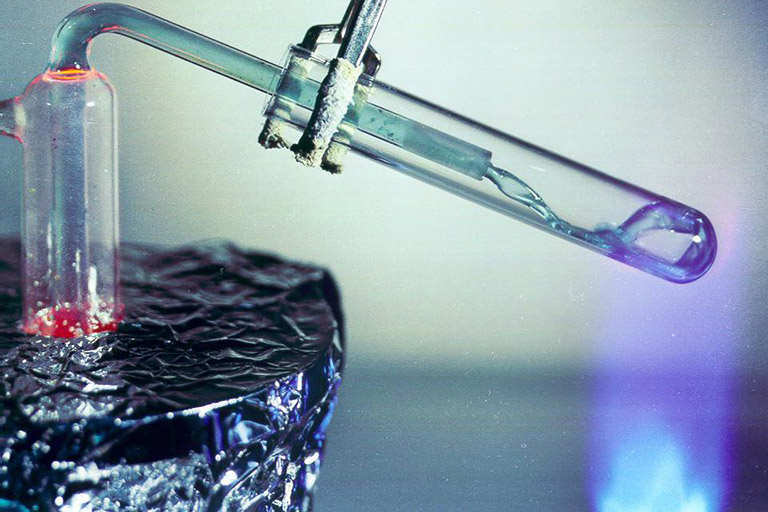
Photo from Oak Ridge National Laboratory, US Department of Energy.
Research Assistant Professor Ondrej Chvala studies Molten Salt Reactors (MSR) not just with an eye for the future, but also with the lens of history. The Joint Committee on Atomic Energy, a US congressional committee that operated from 1946-77, had the sole responsibility to oversee legislation on nuclear power in the country.

Ondrej Chvala
That body ultimately made decisions that would impact the direction of the nuclear industry for decades, most notably that the lightwater reactor design would prevail over other nuclear reactor designs. This, despite that fact that Oak Ridge National Laboratory pioneered MSR technology in the 1950s, and in late 1960s ran the first and only MSR with significant power generation in the world—the Molten Salt Reactor Experiment—which proved that the MSR technology is feasible.
Now, with aging and decommissioning of lightwater reactors, MSRs are trying to make a comeback. Chvala says that the effort to decarbonize energy production globally means nuclear production needs to increase globally by roughly a factor of 100 to meet the rising energy needs, as about 11,000 more people per week were connected to electricity in last five years.
Further, this new clean energy needs be competitive with fossil fuels without subsidies, since the developing world cannot afford to overpay for energy. He believes that MSRs can and should play a role in proving this much-needed power.
MSRs, which use molten salt as liquid fuel and coolant, could be a major contributor to the nuclear energy sector by offering benefits including safety, efficiency, and flexibility in fuels and applications. However, Chvala says there are still many problems to solve and barriers to overcome.
“One of the barriers is the lack of knowledge of these systems because they are not taught in curriculum,” said Chvala. “The most powerful MSR that operated for the longest was quite a while ago, and one issue that nuclear power has, especially in the western markets, is it is not competitive with fossil fuels. People have reasons to think that MSRs will be cheaper and more effective than coal, however we do not know until we can build not just one but a whole fleet of reactors. Long-term experience will be necessary to judge economic competitiveness of any new reactor technology.”
Chemical stability of molten salts results in large range of liquid temperature, between 700-1700K (800-2600 Fahrenheit), at atmospheric pressure. This allows for thinner walls of pipes and other components of the reactor loops, improving operational safety and reducing cost.
Chvala says that the liquid nature of the fuel presents many advantages for safeguards.
“In MSRs, the fuel is homogenized as it is pumped around the primary circuit,” he said. “So, if you take a tiny sample of the fuel, it is representative of the entire core; this is impossible in solid fuel systems.”
One of the most unique aspects of MSRs is that they can be fueled with comparative ease using nuclear waste from weapons and other reactors, due to liquid nature of the fuel, which simplifies fuel manufacturing and burning it up over time.
Also, due to higher operating temperature they can utilize air-cooling efficiently, they do not need to be located near large body of water like coal plants or lightwater reactors. Overall, the relative simplicity of the design and operation make them potentially cost effective while helping to meet the growing energy demand.